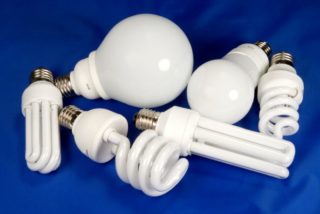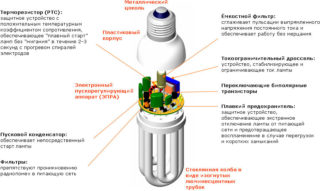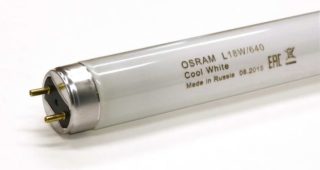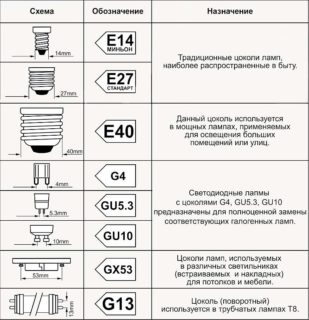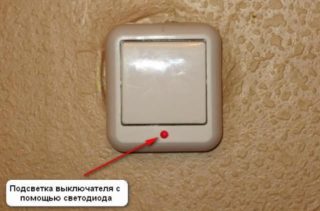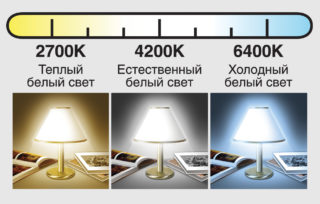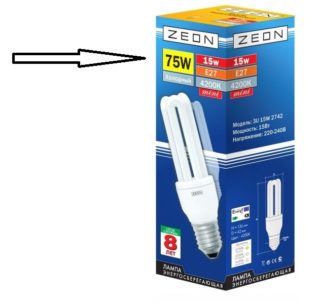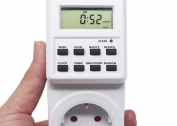Decades ago, in order to save electricity, people were forced to simply turn off the lights in rooms or household appliances. However, even then, the development of energy-saving products was actively carried out and after a while, energy-saving lamps were presented to the public. It is possible to reduce electricity bills due to minimal absorption of the resource during the luminescence of the device.
Advantages and disadvantages of energy-saving lamps
According to statistics, every third apartment in Russia has electricity saving bulbs. Such popularity is due to a large number of advantageous features:
- Soft and even distribution of light in the room, especially in comparison with incandescent lamps. In the latter case, the glow emits a red-hot tungsten filament and nothing more, and advanced models glow throughout its entire area. It is scientifically proven that the uniform distribution of light in the apartment reduces human fatigue, and also favorably affects his emotional background.
- High light output, indicators are several times higher than the outdated analogue - incandescent lamps. Most of the energy consumed is converted into light, if we talk about an incandescent lamp, then 90% of the consumed resource is spent on maintaining the optimal working temperature of the tungsten filament.
- Small heat transfer, so you can install electrical appliances in fragile lighting fixtures, mount them in suspended ceilings, the canvas of which is afraid of exposure to high temperatures.
- Long service life, which ranges from 6 to 15 thousand hours of continuous burning.
There is a wide variety of glow colors, for example, warm, natural and daylight.
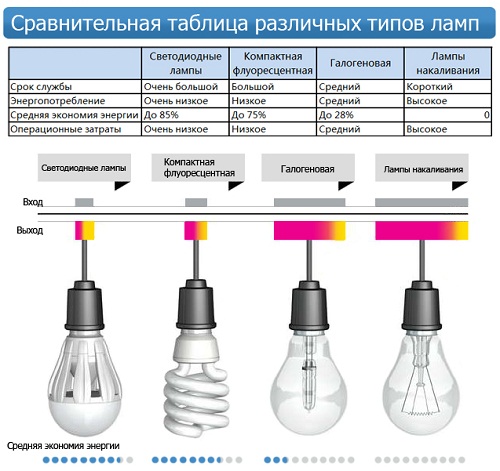
Despite a large number of advantages, there are also disadvantages:
- High price.
- Blown lamps must be disposed of correctly; they must not be thrown into garbage containers.
- The service life depends on the mode of use. It is better to refuse the installation of energy-saving lamps in those rooms where the lights are turned on or off too often.
- The composition includes phosphorus and mercury. These substances are not dangerous as long as the lamp is in good condition and its housing is intact. But if you break it down, the concentration of mercury in the room increases at least 20 times, which poses a serious health hazard.
The flickering of energy-saving light bulbs is allowed by manufacturers. This phenomenon does not indicate a malfunction, but may introduce some discomfort during operation.
Device and principle of operation
Saving lamps are commonly called compact-sized fluorescent bulbs, which belong to the family of gas-discharge light sources.
The advanced technology consists of a base of various types, a flask, the cavity of which is filled with neutral gas or mercury vapor, and a ballast. The outer surface of the flask is treated with a phosphor. Due to such a design feature, ultraviolet radiation is generated when discharged by electricity. Passing through gas or mercury vapor filling the cavity of the flask, they are converted into visible light.
Varieties and applications
As a rule, many mistakenly believe that economical lighting devices are an exclusively luminescent form, but this is not so. The following varieties exist:
- Compact fluorescent tubes.
- Luminescent linear type.
- Some models of LED bulbs.
The latter type has many advantages in comparison with its predecessors. There are several reasons for this:
- The light output level is many times higher.
- The composition does not contain mercury vapor, which carries a potential threat not only to health, but also to human life.
- High mechanical strength ensures uninterrupted and continuous operation.
Depending on the type of base used, the device is divided into several types:
- G53, 2G7, G23, 2D are models of a decorative type, as a rule, used for illumination or in spotlights.
- E14 - a device equipped with a 1.4 cm thread. Most often used in small household cartridges.
- E40 - large base diameter, built-in electronic ballast.
- E27 - the version is equipped with 2.7 cm thread, most often they are installed in cartridges of standard sizes.
In the form there are various modifications of lamps - standard, pear, oval, candle, etc.
Why do energy-saving lamps blink
This phenomenon is very common, even in those conditions when the lamp is de-energized. In fact, this is normal and simply cannot be otherwise, due to the presence of a switch with an indicator. This switch is equipped with its own LED, which is continuously lit to detect "yourself." Current is also supplied to it, its strength is not enough to start the lamp, but enough to flicker.
To solve the problem, you will need to change the switch or remove the indicator from the installed one. No more flickering should bother household members.
Also, such phenomena can be observed with strong power surges, ballast malfunctions, as well as in the event of interference during operation of capacitors inside the unit. Sometimes the lamps may flicker when they are installed in the chandelier in an amount of more than three pieces.
Home selection criteria
Energy-saving lighting products have many characteristics. This makes choosing a device for the home difficult.
Selection criteria to pay attention to:
- Voltage. If unstable voltage is observed at home, then it is necessary to give preference to lamps that can work in a wide range. Such information is always displayed on the packaging.
- The color of the radiation. This parameter is characterized by color temperature, the unit is Kelvin. The higher the color temperature, the shade changes more from yellow to blue. As a rule, the color of the radiation is displayed on the packaging and on the case of the device itself. There are also color-changing lamps.
- Power. On the packaging for a particular model, its luminous flux, as well as the power of incandescent lamps of a similar brightness, is indicated. The power consumption of LED lamps is usually 6-8 times less. A similar ratio is recommended for use when choosing an LED lamp. However, do not blindly believe what is written on the package. Cases when declared capacity is less than actual are common. Also during operation, the brightness of the LEDs gradually decreases.
- Sizes. Usually LED bulbs are larger than similar incandescent bulbs. This must be taken into account, otherwise they may simply not fit in miniature ceiling lights.
- If the light is switched on with a dimmer, appropriate bulbs are required. On the packaging of the purchased device should be written that it is adjustable.
The color rendering index is small, which suggests that energy-saving lamps slightly distort the perception of colors.
Danger to life and health hazard
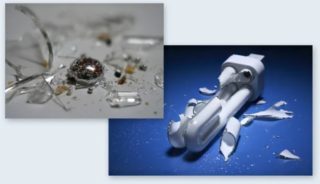
If you follow all the rules for using energy-saving lamps, they do not pose a threat to human health and life. The LED variety of lighting devices is even hypothetically unable to cause damage to human health. They contain mercury in their composition of luminescent devices, therefore they can be dangerous, but human exposure has been extremely rare.
It is recommended to purchase energy-saving lamps in specialized stores where they provide a guarantee for the goods.
